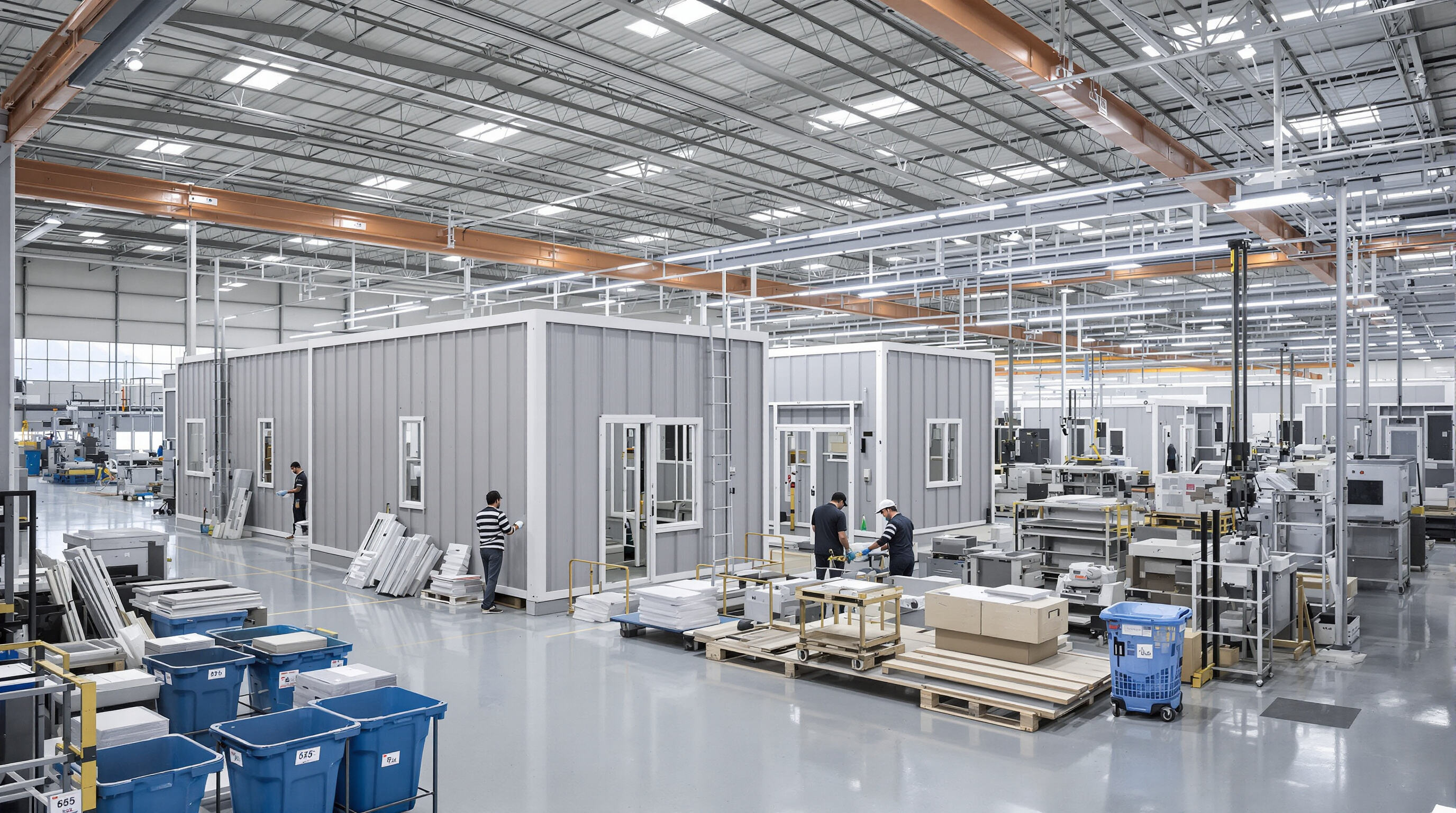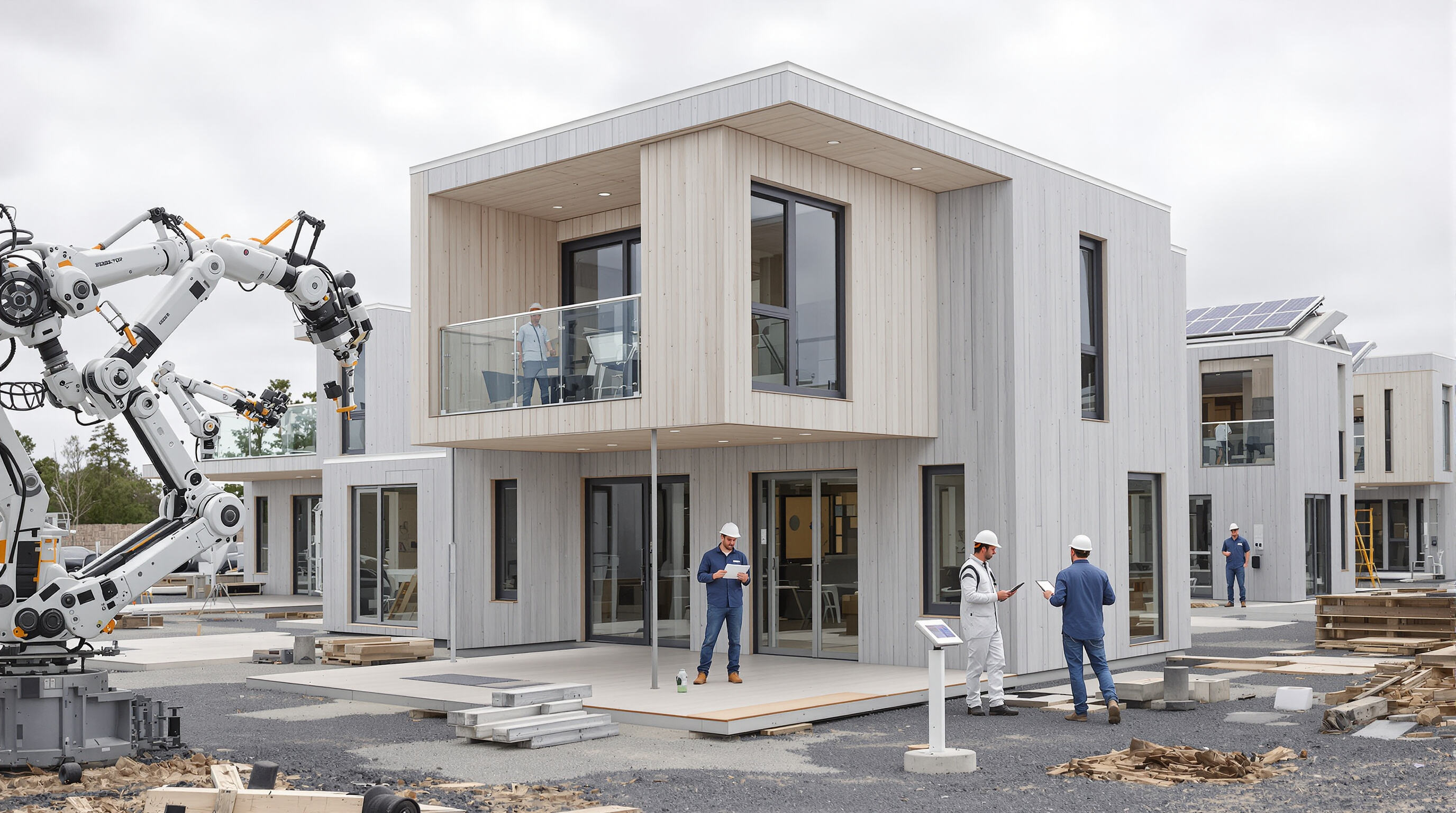Prefab houses built quickly mark a real change in how we construct homes today, mixing factory production techniques with actual architectural creativity to satisfy what people want from their living spaces. Factory made homes cut down on building time quite a bit, around half the time it takes for regular construction methods. While traditional site built homes can take anywhere from six to nine months, these prefabs often finish within eight to twelve weeks. Market research suggests the prefab housing sector will expand about 6 or 7 percent each year until 2030 mainly because cities keep growing and there's just not enough skilled workers in construction anymore (Connected World reported this last year). Looking at numbers from the U.S. Census Bureau, roughly seven and a half percent of all single family dwellings already have some kind of prefab components included somewhere in their design.

Modular factories today can save about 30 percent more materials compared to regular construction sites because they figure out better cutting methods and recycle what would otherwise go to waste. When building happens away from the actual site, most weather problems disappear almost completely according to research from the National Institute of Building Sciences back in 2023. Plus, workers can start preparing foundations while making the modules at the same time. The result? Construction timelines stay pretty close to plan with only around 5% variation either way. That's way better than the usual 25% swing we see in traditional building projects where things often run late or finish early.
The way homes are made in factories today is starting to look a lot like how cars get built on assembly lines. Modules are put together with incredible accuracy, down to about half a millimeter in some cases, which beats the roughly ten millimeters typically seen in old school framing techniques. Because everything is standardized this way, builders can crank out houses at speeds three to five times what we see with conventional stick building methods. That kind of speed makes these factory approaches really attractive when trying to solve our ongoing housing crisis problems. People who have tried this method first hand often mention around 15-20% savings over time when it comes to fixing things up later. The reason? Better protection against water damage and less heat loss through walls, thanks to those controlled conditions inside manufacturing plants where temperature stays consistent throughout production.
Prefab construction is changing how long projects take to complete because most of the work happens inside factories where there's no rain or snow getting in the way. A recent industry report from 2024 shows these methods cut down on delays caused by bad weather and let different parts of the job happen at once. For instance, while crews are working on foundations outside, factory workers can be building walls and floors inside. Traditional construction usually moves step by step through foundation first, then framing, followed by roofing. But with modular approaches, manufacturers create all those components at the same time. When everything goes smoothly, what would normally take around nine months can sometimes be done in just under three and a half months instead.
Take a look at this 2,200 square foot home built in California as proof of how efficient modern methods can be. The whole thing was put together on site within 8 days once it left the factory. When the modules arrived, they already had all the plumbing and wiring installed along with those energy saving windows, which cut down on the work crews needed by about 40 percent. Moving most of the building process inside the factory walls really helped out too. Traditional builders often face weather problems that delay projects, something that happens to around three quarters of all standard construction according to industry reports from 2023. This approach made sure everything stayed on schedule despite what Mother Nature might throw their way.
In prefab factories, they stick to standard processes which helps cut down on all the unpredictable stuff that happens when buildings go up on site. With real time tracking of materials and machines doing the cutting, waste drops somewhere between 15 to 30 percent. And there are special quality control teams who check every module at seven different points along the way. The results speak for themselves financially speaking. According to Modular Building Institute data from 2023, about 92 out of 100 prefab projects actually stay within 5% of what was originally budgeted. That's way better than traditional construction methods where only around 31% come close to hitting those numbers.
Prefab houses built quickly still manage to maintain high standards thanks to serious quality control measures. When everything gets assembled inside temperature controlled factories instead of out in the elements, problems like warped wood or bad insulation just don't happen. Most top companies run their products through several rounds of checks before shipping them out. According to Shelter Origins research from last year, around 9 out of 10 prefab builders actually end up with fewer mistakes compared to traditional on-site construction methods. The real magic happens with those specialized machines that cut and shape materials so precisely they fit together within just an eighth of an inch difference. This kind of exactness really shows in how solid these homes feel once they're put together.
Factory workflows enable repeatability unmatched by traditional construction. CNC routers and laser-guided systems produce wall panels with 99.7% dimensional accuracy, eliminating the gaps and uneven seams common in stick-built homes. This consistency reduces material waste by 18% and ensures uniform load-bearing performance across all modules.
Tests from independent labs indicate that factory made homes can handle wind speeds reaching around 130 miles per hour, which is about 35 percent better than what most local building codes require. Before these homes are sent off site, they go through thorough checks to make sure everything from wiring to water pipes works properly. According to a recent industry study released in 2024, nearly all prefab houses (about 98 out of every 100) passed city inspections right away without needing fixes. That's quite impressive compared to regular stick built homes, which only managed to pass inspections successfully about 76% of the time on their first try.
Research over many years indicates there isn't much difference in how long prefab and traditionally built houses last, provided they use similar materials. What does matter is where they get built. Factory settings actually cut down on problems such as water getting into walls while construction happens something that often leads to wood rot in standard home building. Looking at insurance claims tells another story too. Prefab homes need about 30% less fixing work on their structure within the first ten years after completion according to industry numbers.
Prefab homes built quickly cut down on construction expenses because they make better use of labor time, cut down on wasted materials, and simplify getting things from point A to B. When looking at factory production methods, these prefabs need about half as many man hours compared to regular home building according to recent industry reports from 2024. The factories work so efficiently that there's just not much waiting around or fixing mistakes later on. Plus, when parts are cut with exact measurements and bought in large quantities, we see around a 20 percent drop in wasted materials. All these factors together really help keep the bottom line looking good for anyone considering this type of housing solution.
The prefab construction approach is becoming increasingly important as we deal with rising costs and growing cities. When manufacturers build these modules in factories rather than on site, they save money through bulk production. Studies suggest savings range between about 10% to maybe even 25% compared to traditional building methods. This cost advantage speeds up the creation of apartment complexes and emergency shelters when needed most. Think about it this way: one factory operation might churn out around 500 sturdy homes each year, which basically equals what would make up a whole little community. For places dealing with serious housing problems or experiencing sudden population booms, prefabricated buildings are turning into something of a lifeline.

Building Information Modeling (BIM) is transforming prefab design by creating digital twins that identify clashes before construction begins. This enables real-time collaboration between architects and engineers, reducing rework by up to 40% compared to traditional methods. Advanced software also optimizes material usage, cutting waste by 15â20% while maintaining structural accuracy.
Robotic assembly lines fabricate wall panels with millimeter-level precisionâcritical for seamless on-site integration. A 2024 industry analysis found automated factories achieve 30% faster production than manual workshops, supporting 8â12-week delivery cycles for complete homes. Embedded sensors predict equipment maintenance needs, minimizing downtime and cost overruns.
Many modern manufacturing facilities have started incorporating cross laminated timber or CLT along with recycled steel materials for around 85 percent of their building structures. This switch cuts down on what's called embodied carbon by roughly 60% when compared against traditional concrete construction methods. The buildings also feature top notch insulation combined with those fancy triple glazed windows that are pretty much standard equipment in about 92% of prefab houses across Europe according to some research from Passivhaus back in 2024. These improvements typically save homeowners around seven hundred eighty dollars each year on heating bills. And let's not forget about the solar ready rooftops paired with heat recovery ventilation systems which make these residential units stand out as real contenders in the race toward achieving net zero energy consumption goals.
Key Advances:
The main advantage of quick build prefab houses is the significantly reduced construction time. Prefab houses can be completed in as little as 8 to 12 weeks compared to traditional methods, taking up to nine months.
Yes, research shows that prefab and traditional homes last similarly long. Factory settings reduce common issues like water seepage, making prefab homes durable over time.
Prefab construction reduces labor, waste, and supply chain costs, often resulting in savings of 20-30% compared to traditional building methods.
Technology, such as Building Information Modeling and robotic assembly, enhances design precision, reduces waste, and accelerates production timelines.